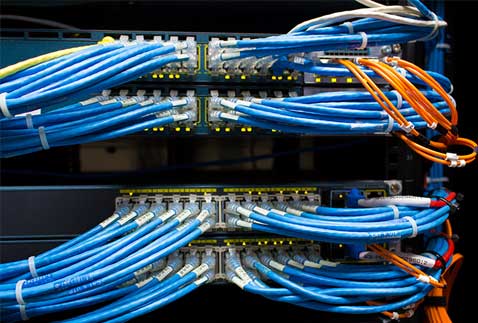Low voltage cabling systems include but not limited to: access control, security, CCTV, burglary, fire, PA, Intercom, nurse call, network, phone, data, and other local and remote notification systems. While progress has been made in wireless technologies, the primary, and most secure, and reliable installations, if not the most economical, are hard-wired systems.
For commercial and industrial the low voltage cabling installations, the field wiring, device mounting, and panel installations are a major portion of the installation. While these tasks are required to be completed in accordance with the customer specifications, local building, fire, electrical, and other codes, they are typically pretty standard and require a little technical knowledge of the specific system terminations, power, testing, and operation.
We are a leading commercial and industrial low voltage cabling system installers in the Toronto area and have invested substantially in training our technicians on the technical aspect of installing, maintaining and operating the systems we promote. Depending on the work schedule, including service calls and maintenance contracts, using technicians for the basic writing task may not be the best scheduling financial and customer relations option. Unless business is in the slope, and technicians need to be gainfully employed rather than working, keep them scheduled on tasks that require their technical abilities and challenges their abilities.
The options for completing the routine wire and feed device installation and mounting include hiding skilled but non-technical employees, using electrical contractors, hiding from a temp agency or finding a subcontractor that knows and understand low voltage systems that can be trusted to install the systems when and the way you want them installed. As low voltage systems technician, project manager, Project Engineer and finally area manager, we know the importance of the installation of the basics and how it can and will have an impact on the system operation. While hiding general skilled labor for the basic is a good option because it affords the opportunity to control the entire installation, this option drives up the overall cost of labor that can be recovered when business is slow and these employees have limited project tasks.
Electrical contractors have the knowledge, experience; know the codes, and wiring methods they can provide the services you need but they may or may not be reasonably priced, provide their best people for their products, or be able to meet your schedule.
The last and best alternative is to subcontract with a company that has experience with low voltage systems, know the requirements of customer satisfaction, building codes, installation methods, understands the relationship you have with your customers and the only cost is for actual services performed and has no additional costs when business is slow. This solution provides the best option of the electrical contractor, temporary agency, and non-technical employees.



